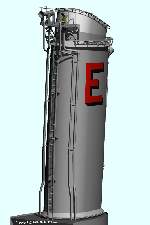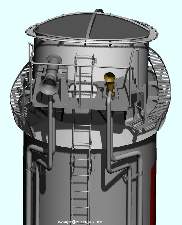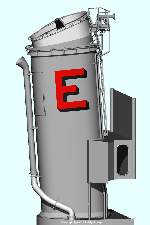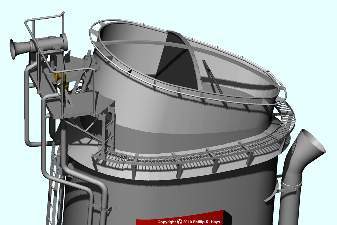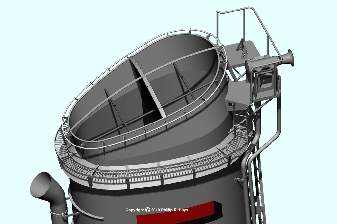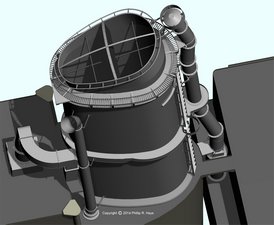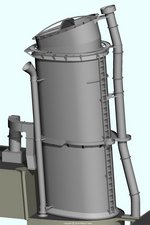The smoke pipes are actually two large concentric tubes. The inner pipe is the exhaust for the boilers - a baffle divides it into fore and aft sections that service two boilers. The outer, shorter pipe is an air intake for the boilers. A skirt fits over the top of the outer pipe to keep rain and spray out. The frame over the top of the pipes was used to lash canvas covers over the openings when in port to keep out rain and birds. Either the front half, rear half, or both could be covered when the associated boiler was not in use. The handrail around the top is typical for the later Cleveland class ships. Earlier ships had hand rails that were parallel with the main deck.
Forward Smoke Pipe
At the top front of the forward smoke pipe is a platform for the ship's siren and whistle. The original Cleveland class ships had separate steam feed and return pipes for the siren and whistle. The siren and port side steam pipes were removed during the CLG conversion.
A catwalk circles the top to provide access for the crew so they can stretch canvas covers over the opening in port. Along the aft side is a large pipe for steam release - a pressure relief for the boilers. A compartment on the forward deck house wrapped around the front of the pipe - this was a shelter for the signal watch. See the CAD Superstructure page for how this compartment fit into the forward deck house.
The big red "E" was painted on the funnel when the Engineering Department achieved the Navy's Engineering Achievement Award. In 1974 the Oklahoma City wore three hash marks under the "E" to signify four consecutive awards - an uncommon feat.
Aft Smoke Pipe
The after smoke pipe also has the catwalk for access, and a large steam relief pipe on the starboard rear side. The aft edge of the catwalk juts out sharply where a ladder attached in the original WWII configuration. The ladder was removed during CLG conversions but the catwalk was not changed. A new ladder was installed on the forward edge of the smoke pipe.
Along the front edge is the flue from the trash burner. The early Cleveland class ships had the trash burner flue on the port side of the smoke pipe. A few of the original Cleveland class ships had the trash burner flue on the forward smoke pipe. The cover at the top varied from ship to ship. Around the funnel about half way up is a remnant of a searchlight platform from the original WWII configuration.

